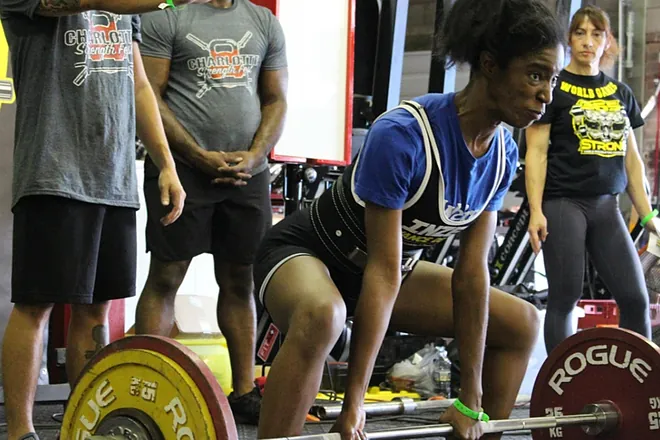In a world where time is the rarest currency, carving out an hour for the gym or a half-hour run can feel impossible. But what if you could transform your body with just five minutes a day? That’s exactly what Japanese trainer Kenichi Sakuma promises with his now-famous Sakuma Method.
This routine — made up of five one-minute exercises — has gained international popularity for its ability to tone muscles, improve posture, and even rival the calorie burn of a 30-minute run. Unlike traditional cardio, it’s about precision, not duration.

What Is the Sakuma Method?
The Sakuma Method is a 5-minute workout system developed in Japan. It’s based on:
- Posture correction: fixing the imbalances caused by sitting or slouching.
- Core activation: strengthening deep abdominal and back muscles.
- Metabolic boost: short, controlled exercises that trigger calorie burn beyond the workout itself.
- Accessibility: no equipment, no gym, no special clothes needed.
Unlike typical workouts that chase sweat and exhaustion, the Sakuma Method is about small, precise movements that fire up “sleeping” muscles.
Why 5 Minutes Can Outperform 30 Minutes of Running
It sounds too good to be true, but research backs up Sakuma’s claim.
- High-intensity bursts work fast: A British study found that just 5 minutes of high-effort daily exercise significantly improves cardiovascular health.
- Metabolic effect continues after training: Unlike jogging (which burns calories mainly while moving), muscle-focused exercises increase afterburn (excess post-exercise oxygen consumption).
- Posture impact vs. cardio: Running doesn’t fix the hunched shoulders, tight hips, or weak core created by modern desk life. Sakuma’s moves directly target these areas.
Key idea: It’s not about how long you move — it’s about how smartly you move.
The 5 Core Sakuma Exercises
Each move lasts 1 minute. Do them in order for a total of 5 minutes.
1. Posture Reset (1 minute)
- Lie flat on your back.
- Bend knees, keep feet together, and press lower back into the floor.
- Tighten stomach muscles while breathing deeply.
Purpose: Resets spinal alignment, strengthens core stabilizers.
2. Core Activation Hold (1 minute)
- Sit on the floor, knees bent, feet slightly lifted.
- Extend arms forward.
- Hold the position without collapsing your back.
Purpose: Fires up abs and trains balance.
3. Glute & Hip Engagement (1 minute)
- Lie face down.
- Lift both legs slowly while squeezing glutes.
- Keep stomach tight to protect lower back.
Purpose: Strengthens glutes, counters weak hips from sitting.
4. Waist Slimming Twist (1 minute)
- Sit with legs extended.
- Rotate torso side to side with control, keeping spine tall.
Purpose: Tones obliques and improves spinal mobility.
5. Back & Shoulder Alignment (1 minute)
- Lie face down.
- Lift chest and arms slightly off the floor.
- Squeeze shoulder blades together, hold briefly, and release.
Purpose: Strengthens back muscles, opens chest, improves posture.
Step-by-Step Tutorial for Beginners
- Find a quiet space — no mat or weights required.
- Warm up for 30–60 seconds with light stretches.
- Follow the 5 exercises in sequence (1 minute each).
- Focus on form, not speed — the slower, the better.
- Cool down with gentle stretches, especially for your back and hips.
Pro Tip: Set a timer for 60 seconds per move. That way, you stay consistent without guessing.
Weekly Schedule Example
Here’s how you can fit the Sakuma Method into your week, whether you’re a beginner or more advanced.
| Day | Beginner (5 mins) | Advanced (10–15 mins) |
|---|---|---|
| Monday | Full Sakuma sequence | 2–3 rounds of Sakuma sequence |
| Tuesday | Rest or light walk | Sakuma + 20 min brisk walk |
| Wednesday | Full Sakuma sequence | 2–3 rounds + bodyweight squats |
| Thursday | Rest | Sakuma + yoga/stretching |
| Friday | Full Sakuma sequence | 2–3 rounds + push-ups/planks |
| Saturday | Full Sakuma sequence | 2–3 rounds + optional cardio |
| Sunday | Rest | Gentle Sakuma + recovery stretches |
Common Beginner Mistakes to Avoid
- Rushing the movements: These aren’t about speed. Go slow.
- Holding breath: Proper breathing keeps muscles engaged and oxygen flowing.
- Arching the back: Keep abs tight to protect your spine.
- Inconsistency: Doing it once won’t change much — daily practice is key.
- Comparing to cardio: This method isn’t about distance or sweat, it’s about precision.
Who Will Benefit the Most
- Busy professionals who can’t commit to long workouts.
- Beginners intimidated by the gym.
- Office workers suffering from bad posture.
- People rehabbing from mild injuries (check with a doctor first).
- Anyone chasing toning and posture correction, not just calorie burn.
Science-Backed Benefits
Here’s what studies and trainer experience suggest:
- Improved metabolism: short bursts of muscular activation keep calorie burn elevated.
- Stronger core stability: reduces injury risk and supports overall strength.
- Better posture and balance: reverses effects of desk jobs.
- Cardiovascular boost: short workouts still raise heart rate effectively.
- Accessibility: requires no equipment, no space, no cost.
How It Compares to Running
| Factor | Sakuma Method (5 mins) | Running (30 mins) |
|---|---|---|
| Time commitment | 5 minutes | 30+ minutes |
| Calories burned | Moderate, continues post-exercise | High during activity |
| Focus | Posture, core, alignment | Cardiovascular endurance |
| Injury risk | Low (controlled movements) | Higher (knees, joints, shins) |
| Accessibility | Can do anywhere | Needs safe space & shoes |
| Adaptability | All levels, scalable | Mostly fitness-dependent |
Practical Tips to Maximize Results
- Consistency beats intensity: 5 minutes daily is better than 30 minutes once a week.
- Pair with light cardio: A short walk or bike ride complements posture work.
- Hydration matters: Even short workouts benefit from proper hydration.
- Track progress: Use photos, not the scale, since posture changes aren’t always reflected in weight.
- Upgrade gradually: After 2 weeks, add a second round (10 minutes total).
The Sakuma Method proves that less can truly be more. In just five minutes, you can strengthen your core, reset your posture, and activate muscles that often go neglected. For those juggling tight schedules or struggling to stay consistent, it offers a sustainable alternative to long cardio sessions.
It won’t replace every form of training — runners still need endurance, and weightlifters still need heavy loads — but for everyday health, posture, and toning, this Japanese approach delivers.
Bottom line: Instead of thinking about how long you can work out, think about how effectively you can move in just five minutes.






